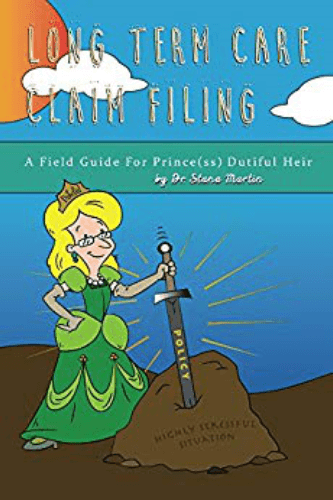❯ Activities of Daily Living (ADLs)
Everyday functions and activities individuals usually do without help. ADL functions include bathing, continence, dressing, eating, toileting and transferring. Many policies use the inability to do a certain number of ADLS (such as 2 of 6) to decide when a policy holder is claim eligible.
❯ Adult Day Care (ADC)
Care provided during the day at a community-based center for adults who need assistance of supervision during the day including help with personal care. Typically people utilize adult day care services when family are doing evening and weekend care, but family have to work and the person needs a place to go during care givers are at work.
❯ Alternate Plan of Care
This is an option found in some policies that indicates when the carrier might consider some type of care other than what is listed as the primary type of care the policy will cover. One example might be that it allows for payment in an ALF when the contract was written for a NH. The exact language of these has varied over the years, so there is no way to give an all-inclusive definition of what it might provide. A careful reading of the contract will let you know what and when this provision may be considered for payment of benefits.
❯ Assisted Living (ALF)
A residential living arrangement that provides individualized personal care and health services for people who require assistance with ADLs. The types and sized of facilities may vary; they can range from a small 3 or 4 bedroom home to a large apartment-style complex. They also vary in the levels of care and services provided. ALFs offer a way to keep a relatively independent lifestyle for people who don’t need the level of care provide in skilled care or in nursing home environments.
❯Bed Reservation
Some policies provide a benefit that allows the payment of claim for a room or bed in an ALF or NH when the client has had to have a temporary stay in a hospital or rehab unit. There is typically a limit on the number of days per year that is covered under this benefit.
❯ Benefit Amount
The sum of money paid to a claimant for which the insurance company has received the premiums. It is usually listed as a daily, monthly, or weekly amount.
❯ Cognitive Impairment
A deficiency in a person’s short or long term memory; orientation as to person, time or place; deductive or abstract reasoning; judgment as it relates to safety and awareness. Contracts can specify that a person must be “moderate” or “severe” in their impairment to trigger claim payments. The level of severity is almost always measured and documented by standardized clinical tests administered by doctors, nurses, or social workers.
❯ Elimination Period
This is essentially the deductible and can sometimes be called a “wait window.” It is specified as a number of days that a claimant must pay 100% of the cost of care before the carrier will begin to paying. Policies will only pay benefits when a claimant receives eligible services. It is wise to know if your elimination period is in terms of “calendar days” or “service days” and to note if any days paid by Medicare or other insurance will count towards these deductible days.
❯ Hands-on Assistance
Physical assistance ( minimal, moderate, or maximal) without which the individual would not be able to perform the ADL. Typically, a care provide must put “hands on” the client in order for the action (like getting out of bed or showering) to be performed.
❯ Home Health Care (HHC)
Services for nursing care or occupational, physical, respiratory, or speech therapy. Also included are medical, social worker, home health aide, and homemaker services.
❯ Inflation Rider (Inflation growth)
an option you can add to a basic policy that will increase the benefit levels to help pay for the expected increases in the cost of care between when you buy the policy and when you expect to use it.
❯ Medication Management
This service can range from simple reminders to self-administer medication all the way up thru a licensed care provider (usually a nurse) who can measure and deliver medications.
❯ Mini-mental State Exam (MMSE)
also known as the Folstein test, it is a brief 30-point questionnaire that is used to screen for cognitive impairment. It is also used to estimate the severity of cognitive impairment and to follow the course of cognitive changes in an individual over time, thus making it an effective way to document an individual’s response to treatment.
❯ Nursing Home (NH)
a licensed facility that provides general nursing care to shoe who are chronically ill or unable to take care of daily living needs. May also be called a long term care facility and is sometimes an extension of a hospital or rehabilitation unit.
❯ Pool of Money
Some policies operate as a clock where you have a finite time limit to use the benefits. However, policies that operate from a pool of money indicate that there is a maximum amount of money available in the policy. The policy will continue to pay benefits until the entire pool is gone. Typically the pool is calculated by multiplying the daily benefit (or monthly) by the time multiplier. So a $3000/month benefit with a 3 year multiplier would calculate the pool as this
$3,000 X 3years = $108,000 pool of money.
❯ Reduction for ALF or HHC
Some policies have the capacity to reduce the daily or monthly benefit amount by a percentage amount. For instance, a policy may have $5000/month for facility based care but have a 50% reduction for home care (HHC). In this example, the client would have $2500/month available for home care but $5000 for facility care.
❯ Respite Care
Care provided by a third part that relieves family caregivers for a few hours to several days and gives them an occasional break from daily caregiving responsibilities.
❯ Restoration
Some policies will have a restoration rider added to them. This rider means that if a person uses the policy for a round of care – and doesn’t use the policy completely up – and gets better, then the carrier will top the pool of money up to its original amount for the next time the owner needs to use the policy. The most common usage of this type of rider is if someone has cancer or an accident that requires long windows of care for the recovery period.
❯ Rider
An addition to an insurance policy that changes the provisions in the policy. Usually the rider has authority when there is a discrepancy between the original contract and the rider. However if the rider doesn’t address some portion of content from the original contract, the original contract holds the authority (i.e. if HHC rider allows for payment of care at home, but doesn’t mention the elimination period at all, then the original contract’s definition of the elimination period will apply to the HHC benefits).
❯ Rx Benefit
This is more typical in older polices. You will occasionally find that there is a small reimbursable amount for expenditures on doctor prescribed medications.
❯ Shared Care
A rider that allows two people to merge their pools of money. If the first person who needs care drinks his/her pool of money dry and still needs care, s/he has the option of drinking from the other person’s pool. Or, conversely, if the first person dies with money still in his/her bucket, the surviving person inherits what is left in that bucket to use for care.
❯ Six-Item Screener (SIS or SCIS)
One of the two most common standardized tests to measure cognitive impairment (the other is called the Mini-Mental State Exam or MMSE).
❯ Stand-by Assistance
A level of assistance where a care giver doesn’t necessarily put hands on the client to offer help, but rather is standing near-by in case the client needs help to finish the ADL or appears to be in danger of injury (for instance, a person may get out of a chair well most of the time but now and then has a balance issue that could result in a fall).
❯ Stay at Home Benefit (Home Modification)
This is typical of more modern policies. They offer a small sum of money to pay for home modification or durable medical equipment so that a claimant has a chance of staying in home care longer.
❯ Survivorship
A rider offered with some policies purchased by couples. The rider typical is not effective until the policy has been owner for a window of time with no claims (usually 10 years). Once the window has been met, the rider provides that the surviving spouse’s premiums are paid-in full up on the death of the first spouse.
❯ Tax-qualified
A policy that confirms to certain standards in federal law and offers some federal tax advantages. As of the writing of this document, the primary advantage was that the benefits paid for care were not taxable as income once they were paid. However, this law can be changed at any time and so it is always wise to consult with a tax professional if this is a concern.
❯ Time Window
nearly every policy will designate a time window for how long the policy will pay benefits. Some older policies may show that this is “unlimited,” meaning the policy would pay until the claimant passes away. Newer policies all have time limits on them and will be noted in terms of days or years. It is important to read the contract to know if this time window is a clock or if it is a multiplier to calculate the Pool of Money.
❯ Waiver of Home Health Care (Waiver of HHC)
A rider found in some policies that says the elimination period is waived when the claim starts as home health care.
❯ Waiver of Premium
A provision in the policy that relieves the insured of paying the premiums while receiving benefits.
Questions?
Contact - Mrs. LTC
Long Term Care Claims & Insurance
Question about a Claim?
Shopping for coverage?









Leave A Comment
You must be logged in to post a comment.